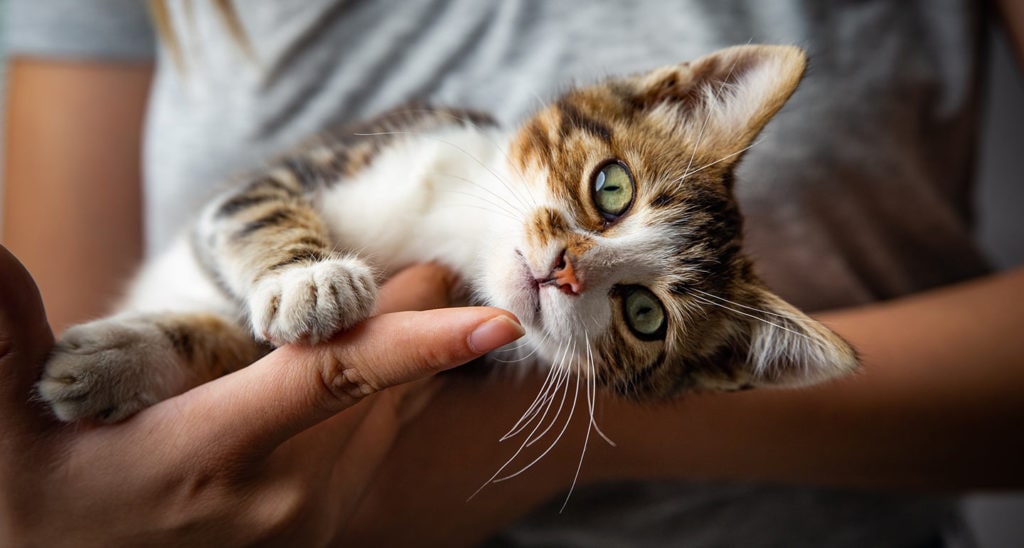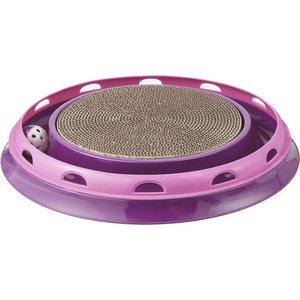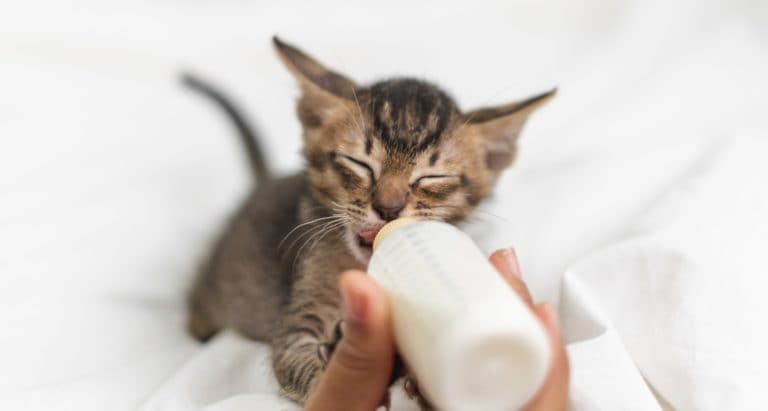Anyone can love a cat—just gaze into their bewitching eyes and before long you’ll be head over heels. But if you’re asking yourself, “Should I get a cat,” remember that it takes a lot more than love to provide a safe, stable home for another living creature. The real question is whether you can do what it takes to be a responsible cat parent.
Loving cats is, of course, an excellent first step! But before you decide to adopt or buy a cat from a reputable breeder, ask yourself these questions—and be honest about your answers. (Hey, we won’t judge.)

1
Do I Have Time for a Cat?
The biggest thing to keep in mind when you’re deciding whether to get a cat, says Dr. Ale Aguirre, DVM, DACVIM, an internal medicine specialist and owner of Salt River Veterinary Specialists in Scottsdale, Arizona, is that the lifespan of a cat is typically 13 to 18 years. Some may even live for 20 years, so you should get a cat only if you’re prepared for a long commitment. As you’re evaluating whether you have time for a cat now, it’s also important to think about how your life may change in the future, and whether caring for a cat fits into your long-term plans.
Here’s the good news: Cats are relatively low-maintenance companions, especially compared to dogs. But they still require your attention and care, and the amount of time you’ll need to devote to them will vary, depending on their personality.
“Some cats are very active and enjoy playing with interactive toys with their pet parents, while others may want to sit on your lap while you read a book,” says Dr. Susan Whittred, DMV, executive director of veterinary medicine at The Ladew Cat Sanctuary/The Patricia H. Ladew Foundation, Inc. in New York. “And then there are those that are the stars of Zoom calls.”
“Every cat has a unique personality with individualized emotional needs,” adds Dr. Aguirre. “Despite their independence they still require companionship to feel fulfilled and at peace.”
Of course, the cat’s age makes a difference, too. “Young kittens love to play and will need some directed play time with you to minimize the risk of mischievous trouble-making,” says Dr. Evelyn Kass, DVM, an integrative, holistic veterinarian with a focus on nutrition and herbal therapy.
Dr. Kass, who operates The Pet Nutrition Doctor in Phoenix, Arizona, also points out that long-haired cats need frequent grooming, with some requiring brushing every day to prevent painful knots from forming.
“If you're out of the house eight hours a day, consider getting two cats so they have company,” Dr. Whittred says. “If you do have to travel, finding a pet sitter that will come to your house is the best option and your cat will be happier at home than in a boarding facility.” (You can learn more about the pros and cons pet sitters here.)
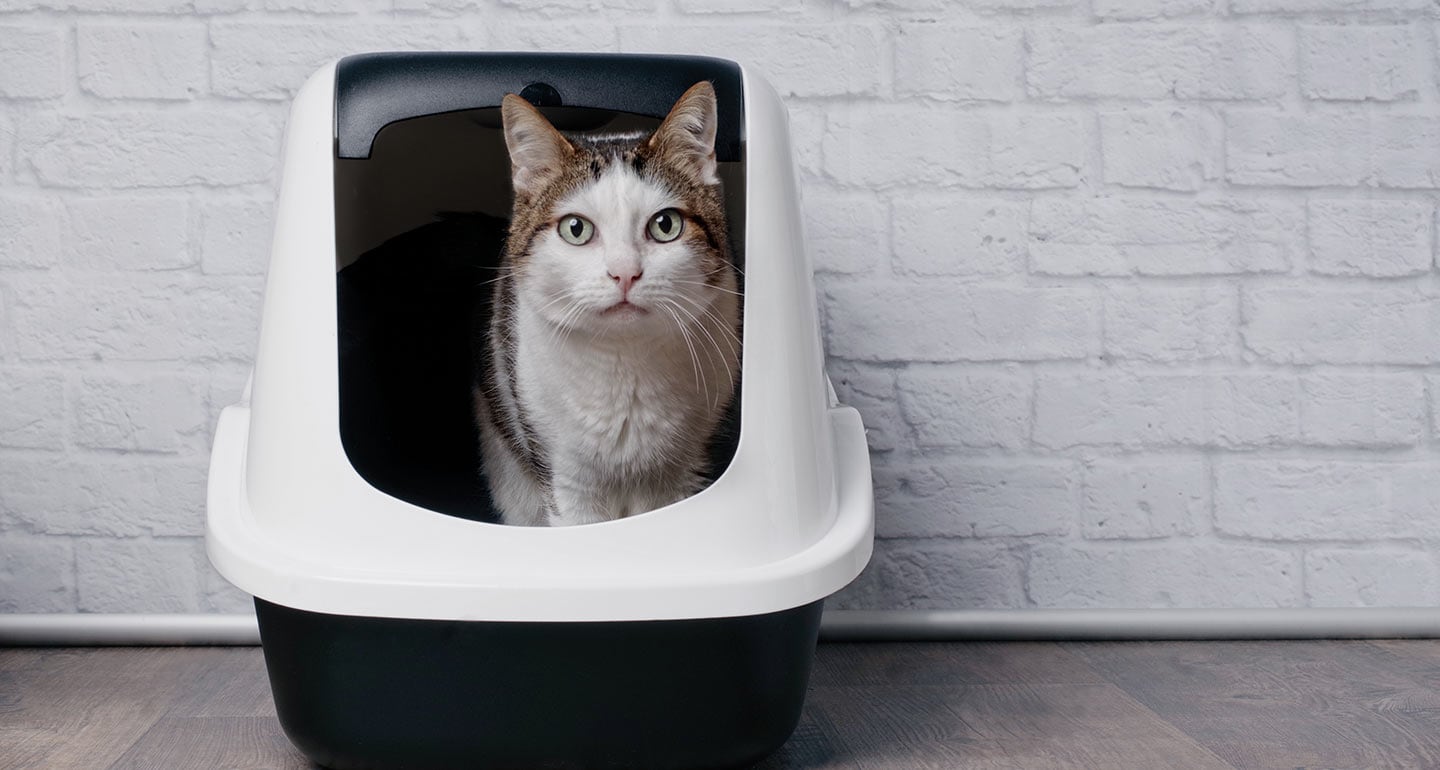
2
Am I Willing to Take Care of a Cat?
Sure, you’re willing to snuggle your cat on the couch and let them knead biscuits on your lap. But if you’re not up for daily litter-box-cleaning duties, you might not be ready for a cat. Beyond that, there’s the daily commitment of playtime and feeding. And, keep in mind, cats love to scratch things.
“Scratching is a normal behavior of cats,” Dr. Whittred says. “It helps them remove the outer sheathe on their nails, it's calming for them and helps stretch their muscles. Cats like different types of surfaces to scratch on, so this may take some trial and error to find the one that your cat likes.”
She recommends a horizontal corrugated cardboard scratcher for cats who like to scratch horizontally, or one that is about 3 feet tall for those who prefer vertical clawing. When you are teaching your kitty about which surfaces are acceptable scratching posts, she adds, vinyl coverings for the nails, like Purrdy Paws Soft Cat Nail Caps, can come in handy. Your vet can even help you apply them.
“Regular manicures and pedicures are especially important as they get older,” Dr. Whittred says. “Cats are less likely to remove the outer sheathe of the nail as they age and when that happens, the claw can grow right into the paw pad.”

3
Do I Have the Resources to Provide for a Cat?
In general, cats are not the most expensive pets you can choose—but there can certainly be exceptions. That means you should get a cat only if you’re ready for both routine and unexpected bills.
“You can expect to spend approximately $500 for the initial adoption and supplies, then on average $500 annually,” Dr. Kass says. “But if your new cat gets sick, you need to be prepared for medical bills that could come up.” The fee for purchasing a purebred cat from a reputable breeder can be even higher.
The cost of emergency vet visits or long-term care in the case of chronic illness can reach into the thousands of dollars, Dr. Kass adds. “Consider getting pet insurance if spending a few thousand dollars on an emergency would be a burden for you.”
For your first-year budget, be sure to account for the cost of vaccinations, spaying or neutering and routine deworming.
“Many hospitals offer wellness healthcare plans that bundle the recommended preventative care into a discounted payment plan,” Dr. Aguirre says.
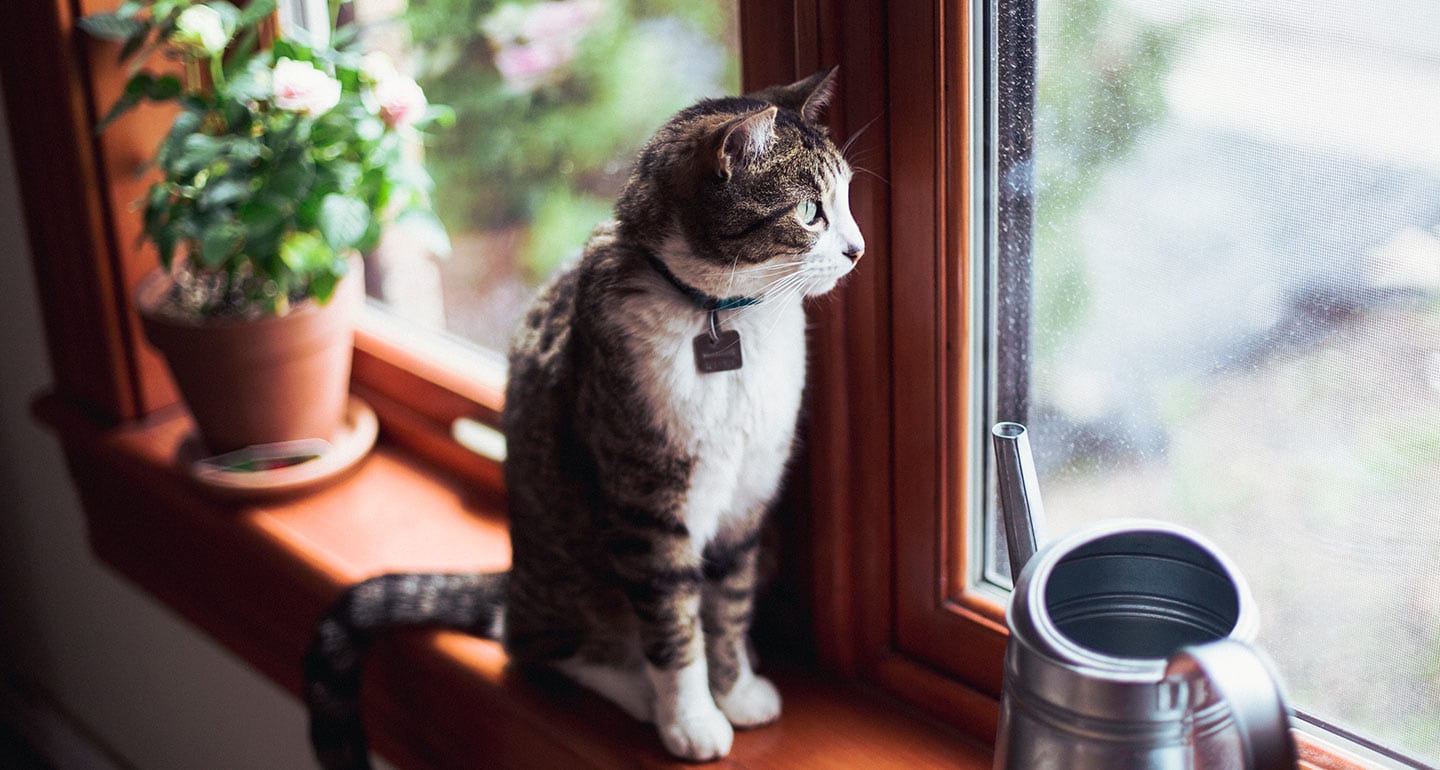
4
Is My Home Cat-Friendly?
Before going all in on getting a cat, check with your landlord to make sure pets are allowed and see if any family members or roommates have allergies. These things can swiftly answer the “should I get a cat” question. After all, the only thing worse than longing for a pet cat is having to relinquish your precious kitty when your landlord or roommates put their foot down.
If you do decide to get a cat, you’ll want to cat-proof the house before bringing your new pet home. These tips can prevent the most common cat-astrophes, Dr. Whittred says:
- Provide double screens on windows to prevent cats from falling out
- Secure dangling cords on blinds so cats don’t get caught up in them
- Protect electrical cords so cats don’t bite them and risk electrical shock
- Be careful entering and exiting the home, as cats can dart through doors and become lost
- Check to see if any of your plants are poisonous. Lillies, for example, can be deadly. Consult our guide to poisonous plants for cats.
- Keep medicines out of reach
Remember: Cats love to claim their kingdoms. In other words, they can be quite territorial.
“Providing a space that is both safe and stimulating is essential,” Dr. Aguirre says. “Depending on the cat’s personality, a busy home filled with lots of noise, children and people might be stimulating, while other more nervous cats would be overwhelmed. Try your best to have a designated space, away from the household, where a cat might have time to escape and recharge if necessary.”
Cats tend to enjoy overseeing the action from a high-up perch, he adds, which makes cat trees an attractive option for many cats. Cat trees come in a variety of heights and with many different features—this cat tree buying guide can help you find the best option for your pet.

5
Will My Other Pets Get Along With a Cat?
Introducing pets can be tricky. “They’re just like us—some people we like, others maybe not so much,” Dr. Whittred says. “Slow introductions are the best course of action, and give it time, perhaps months. Most of the time, if you go slowly, you can successfully introduce a new cat into your household.”
If you are worried about your pets getting along, check with the shelter or breeder. They may know which cats get along with other animals. If you already have a dog, it’s best to have a meet and greet with the dog and cat together before you seal the deal.
“This introduction is critical to assessing whether your dog exhibits any unknown aggression towards cats or small animals,” Dr. Aguirre says. “Initially, all introductions between a dog and a cat should occur with the dog leashed. It is important to pay special attention to the body language of both the dog and cat. Short controlled leashed interactions should be repeated several times over the next few days.”
Dr. Kass adds: “Even when you feel they are doing well, do not leave them alone together for at least a few days until you are absolutely sure.”
Learn more about introducing cats to other cats and to dogs.

6
Will a Cat Affect my Health?
Allergies can be the deciding factor if you’re still wondering “should I get a cat?” If you aren’t sure whether you have allergies, Dr. Whittred says, just visit a cat shelter—you’ll quickly find out.
Dr. Aguirre points out that asthma can be exacerbated by cats and should be an important consideration prior to getting a cat, too. Be sure to check with your medical doctor regarding the risks for your specific health condition.
To help with allergies, Dr. Aguirre encourages pet owners to bathe cats often to reduce dander. Frequent vacuuming, dusting and air-filtration systems are recommended, too. For more ways to stop the sneeze, read about how one cat veterinarian manages her severe cat allergies.
So, should you get a cat? If the questions above are giving you second thoughts, the answer might be no—but don’t fret! There are lots of other ways for cat lovers to interact with their favorite felines, from volunteering at your local shelter to hanging out at a cat café. Remember: Cats can bring a wealth of happiness to your home and your heart, and getting a feline friend can be one of the best decisions you’ve ever made—but only if you’ve made sure you’re ready to take that step.
Share:
